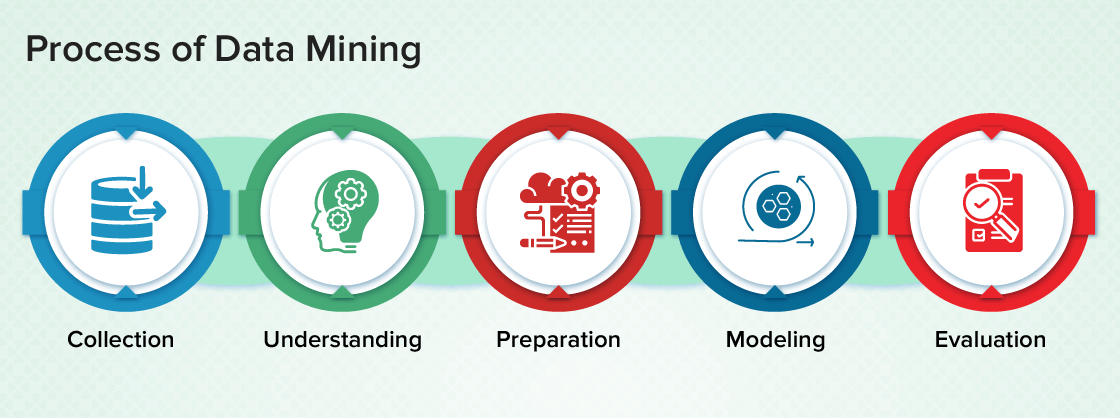Your Ultimate Guide to Data Science Interview Questions in 2024

Getting selected for a data science role in a top company is a dream for many aspiring data scientists. With six years of experience in the field, I’m here to share some insights and tips on how to prepare for and crack your data science interview. This guide will help you understand what to expect, how to prepare, and how to stand out in your data science interview.
Understanding the Interview Process
Before jumping into preparation, it’s important to understand the process for a data scientist interview. Most top companies have a multi-step data science interview process that includes:
- Review your Resume: Your resume is the first thing recruiters see. Ensure it’s customized to highlight your data science skills and experience.
- Technical Skills: In a data science Interview, technical skills include online coding tests or technical questions to assess your basics.
- Technical Interviews: These are detailed interviews focusing on data science interview questions, including analytics, algorithms, and data analysis.
- Competency Interviews: Evaluation is done on your behaviour, soft skills, interpersonal, and teamwork abilities.
Data Science Interview Preparation
1. Brush Up on Basics
To ace a data science interview, having a stronghold of the basics is crucial. This includes linear algebra, probability, statistics, and programming skills (usually in Python). Recalling key concepts and practicing problems can be very advantageous.
2. Practice Most Asked Data Science Interview Questions
One of the best ways to prepare is by practicing repeated data science interview questions. Below are some frequently asked questions:
- What is cross-validation, and why is it important?
- How do you handle missing data in a dataset?
- Explain the difference between supervised and unsupervised learning.
- Can you explain the bias-variance trade-off?
These questions are just trivial. Practicing a wide range of questions will help you feel more confident.
3. Utilize Data Science Interview Questions and Answers PDFs
Many resources are floating on the internet that compile top data science interview questions and answers. These PDFs can be immensely helpful as they often include detailed explanations and sample answers. Practicing these can provide insights into what interviewers are looking for and how to structure your answers.
4. Prepare for Technical Interviews
Technical interviews often involve coding and algorithm-based questions. Websites like HackerRank, LeetCode, and Glassdoor have huge collections of data science interview questions for freshers and experienced candidates. Continuous practice on these platforms will boost your confidence and coding skills.
5. Focus on Problem-Solving Skills
Data scientists are problem solvers at heart. In your interview, you’ll likely be presented with real-world problems to solve. Practice solving different types of problems and explaining your thought process clearly. Use resources like Kaggle to work on projects and build your portfolio.
Data Science Interview Tips
1. Communicate Clearly
Communication is the ultimate key to any interview. Explain your thought process, approach, and solutions, showcasing your analytical skills. If you get stuck, don’t hesitate to ask questions. This shows your preparedness to learn and collaborate.
2. Showcase Your Experience
For experienced candidates, highlighting your past projects and their impact is crucial. Be ready to discuss your role, the challenges you faced, and how you overcame them. This not only shows your technical skills but also your problem-solving abilities and experience in handling situations.
3. Behavioural Interviews Matter
Be ready to discuss your previous work experiences, how you handle conflicts, and your ability to work in teams. Don’t underestimate the importance of behavioural interviews, as they highlight your team-building capability, interpersonal skills, and overall disposition.
4. Continuous Learning
The Data Science field is always evolving and changing. Your willingness for continuous learning should be visible to the recruiter, so mention all certifications, webinars, online courses, and workshops that you have completed. Staying updated with current trends and technology is a must.
Resources for Preparation
- Top Data Science Interview Questions
- Glassdoor: Offers insights into company-specific interview questions.
- HackerRank: Provides a range of coding challenges and interview questions.
- LeetCode: Excellent for coding and algorithm practice.
- Kaggle: Great for hands-on projects and competitions.
- PDF Resources: Many websites offer downloadable PDFs with curated data science interview questions and answers.
Here are some frequently asked questions for basic and advanced Data Science Interview
1. What is R² Metrics?
R² or the coefficient of determination is a statistical measure in a regression model that represents the proportion of variance in the dependent variable that can be explained by the independent variable. In simple words, r-squared shows how well the data fit the regression model.
2. What is Data Mining?
Data Mining is the process of sorting out and analyzing large raw data to extract useful information and identify patterns and relationships to help solve business problems and develop effective marketing strategies.

3. What is bias-variance trade-off?
In Machine learning, the Bias-Variance trade-off is a basic concept that explains the relationship between model bias and variance. In simpler terms, it indicates the trade-off between the model’s capability to accurately represent the data and how well it makes the predictions on the unseen data that was not used to train the model.
4. What are exploding gradients?
Exploding gradients emerge when model gradients accumulate uncontrollably and result in large updates to the neural network model during training, causing instability.
5. What is a confusion matrix?
The confusion matrix is a performance measurement for machine-learning classification problems. It is a table that shows the performance of a classification algorithm as it summarizes the performance of a classroom algorithm.
6. Explain how a ROC curve works.
The ROC curve displays the performance of a binary classifier with different decision threshold levels. The curve is created by plotting the true positive rate against the false positive rate at various settings.
7. What is selection bias?
Selection bias occurs when there is a bias in the selection of the data for training machine learning models. It happens when prototyping teams narrowly focus on solving specific problems without considering how the data will generalize to broader contexts.
8. Explain the SVM machine learning algorithm in detail.
SVM is a machine learning algorithm that uses supervised learning models to solve complex problems like regression, classification, and outlier detection by performing optimal data transformation.
9. What are support vectors in SVM?
Support Vector Machines (SVM) are used for regression, classification, and outlier detection tasks. The main aim of the SVM algorithm is to find the optimal hyperplane that can separate data points. The hyperplane ensures that the margin between the closest points is maximized. It is used in tasks like image detection, spam detection, handwriting identification, and anomaly detection.
10. Explain the decision tree algorithm in detail.
A decision tree is a supervised learning technique used for regression and classification problems. It works by splitting the data into subsets based on the most important feature at each node of the tree, mimicking human decision-making.

11. What is Entropy and Information Gain in a Decision Tree algorithm?
Entropy is a measure of impurity in a dataset. Information Gain assesses the expected decrease in entropy and is used to determine which feature to split on when building a tree. Features with the least impurity are chosen as root nodes.
12. What is pruning in a decision tree?
Pruning decreases the size of the decision tree by eliminating branches that add little accuracy, improving generalization and minimizing overfitting.
13. What is Ensemble learning?
Ensemble learning improves prediction accuracy by combining predictions from multiple models, such as decision trees, neural networks, and linear models, to reduce errors and biases.
14. What is a random forest? How does it work?
Random Forest is a supervised machine learning method that uses ensemble learning for regression and classification. It combines predictions from multiple models to enhance accuracy.
15. What cross-validation technique would you use on a time series dataset?
Time Series Cross-Validation, which follows the chronological order of data, is preferred over k-fold or LOOCV for testing future, unseen data in real-world scenarios.
16. What is logistic regression?
Logistic Regression is a statistical method used to predict the probability of an event happening when the dependent variable is categorical. For example, predicting whether a student will pass or fail based on previous scores.
17. What do you understand by the term Normal Distribution?
Normal Distribution, also called Gaussian distribution, is the most common form of distribution for random variables. It serves as a foundation for probability theory and is used to represent a large number of variables.

18. What is a Box-Cox Transformation?
A Box-Cox Transformation is a statistical tool that transforms non-normal data into a normal distribution, improving prediction accuracy in linear regression models.
19. How will you define the number of clusters in a clustering algorithm?
The Elbow method is commonly used to determine the number of clusters by running the algorithm with different cluster numbers and calculating the within-sum-of-squares.
20. What is deep learning?
Deep learning is a machine learning technique in Artificial Intelligence that uses artificial neural networks to solve complex problems like image recognition, speech recognition, and natural language processing.
Conclusion
Getting picked up for a data science role in a top company requires complete preparation, a solid understanding of fundamentals, and the ability to demonstrate your problem-solving skills. By practicing common data science interview questions, utilizing available resources, and showcasing your experience, you can significantly improve your chances of success and looking at the Data Science salary Trends in India, one can easily acquire a good job with the right expertise. Remember, every interview is a learning experience, so stay positive, keep learning, and you’ll eventually land your dream job. Good luck!
